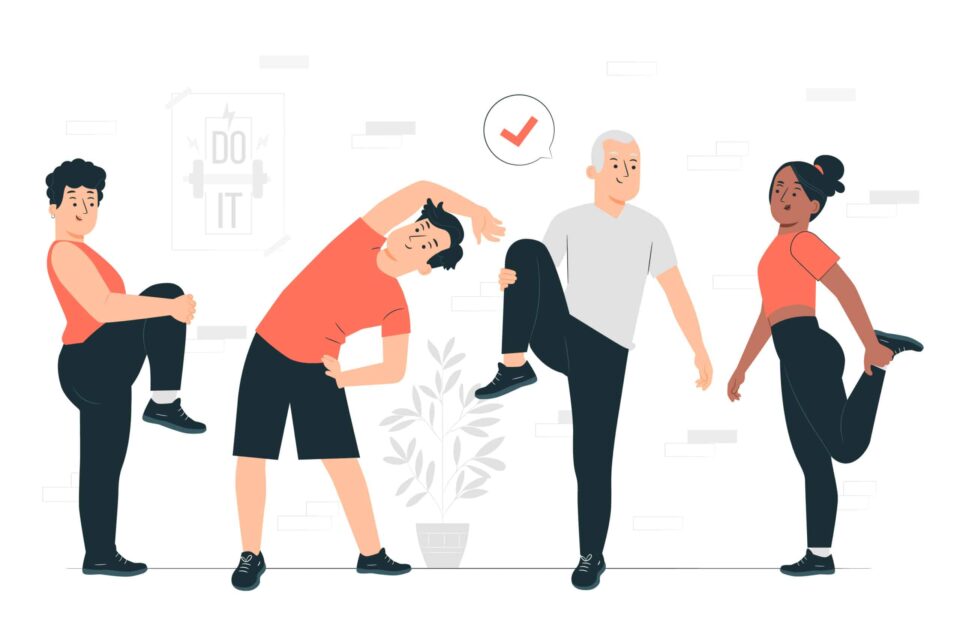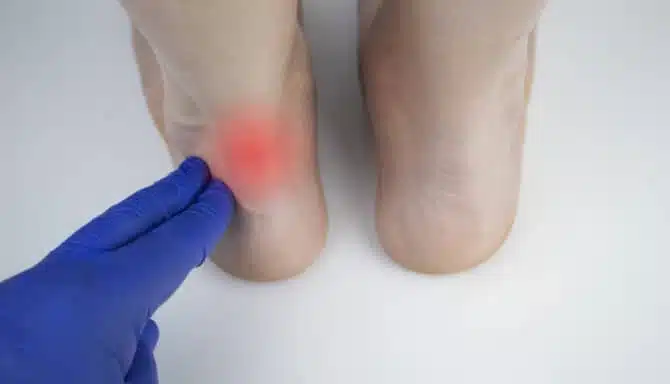Our bodies have a lot of work to do on a daily basis, to put it lightly. But one critical function is blood circulation, which is at the top of the list in terms of importance.
You can experience many health conditions without proper blood flow, ranging from aches and pains to serious heart problems. That’s why it’s wise to learn the ins and outs of blood circulation. There are several components to this broad topic. These include:
- What is blood circulation?
- The link between blood circulation and heart health
- Blood circulation benefits
- What is the cause of poor blood circulation?
- The link between blood circulation and foot health
- How to improve blood circulation

What is Blood Circulation?
Blood circulation is how your blood vessels deliver nutrients and oxygen to your cells and body parts.
The issue with blood circulation is that we can easily restrict blood flow when we neglect to care for ourselves. Furthermore, blood flow is not an “all-or-nothing” dynamic; we can go about our routines with poor blood circulation and not even realize it!
But the longer you proceed through life with poor blood flow, the closer you become to experiencing health conditions and frequent aches and pains.
The Link Between Blood Circulation and Heart Health
The circulatory system distributes blood throughout your body, with the heart at the centre of all the action. This system has three main components: the heart, blood vessels and blood itself. This system is the reason why we can function every day. As a result, it’s safe to say it’s a rather critical function of the human body.
Your heart pumps around eight pints worth of blood every single day. This means that if your heart is in poor health, it can affect blood flow. The same is true if you switch things around: if your arteries and veins are in poor condition, it can affect your heart health. More specifically, when your arteries deliver oxygenated blood throughout your body, the blood then has to find its way back to where it came from. Your veins do this by bringing the blood back to your heart, making its way towards your lungs to “drop off” carbon dioxide and “pick up” more oxygen.
Blood Circulation Benefits
- It keeps your heart healthy.
- It keeps your feet, legs and other body parts healthy.
- It allows all vital organs to function properly.
- It keeps you feeling sharp and alert (blood delivers oxygen and glucose to your brain)
- It reduces aches and pains, including foot pain.
What is the Cause of Poor Blood Circulation?
How you live your life can determine how efficiently your body distributes blood. Since plaque build-up, narrowed vessels and blood clots are the main culprits behind circulation restriction, preventing these interferences is important.
Likewise, you can tackle many causes of poor blood circulation by adjusting lifestyle habits. Your family doctor or healthcare specialist can address diseases that lead to poor blood circulation.
Here are some reasons your body may be struggling to distribute blood:
- You live a sedentary lifestyle without exercise.
- You smoke cigarettes.
- Your diet is lacking in healthy foods. Furthermore, a high fat and high cholesterol diet can lead to plaque build-up (atherosclerosis) in the vessels.
- You have high blood pressure (when blood pushes against the vessel walls, it can weaken them).
- You have diabetes. This disease can cause excess glucose to harm your blood vessels.
- You have blood clots in your legs.
- You are overweight. Obesity can be a risk factor for other causes of poor blood flow.

The Link Between Blood Circulation and Foot Health
When blood efficiently flows from your heart to your legs and feet, you reduce your risk of developing muscle pain, stiffness and weakness. Your feet and legs can also give you signals that you are having a problem with blood circulation.
But how does blood reach your feet?
There are specific arteries that transport blood to your legs and feet. One, the femoral artery, starts in the thigh area and extends downward toward the knees. This artery is responsible for transporting blood to your lower body and branches off into six other arteries along its route, all of which must supply blood to a different body part. Then there is the posterior tibial artery, which transports blood to the plantar surface of the foot.
Foot and leg issues may occur if you neglect your health by disregarding these arteries. For example, peripheral artery disease (PAD) may develop. This will lead to plaque build-up inside the femoral artery, and the vessels will narrow, greatly reducing the amount of blood that can pass through.
Here are some indicators that you need to improve blood circulation to your feet:
- Numbness
- Cold feet
- “Pins and needles”
- Foot pain
- Discolouration
- Varicose veins
- Foot fatigue and “heaviness.”
- Swelling (edema): your body’s lower extremities can swell if your heart cannot circulate blood properly. When blood collects, your vessels release fluid into the surrounding tissues.

How to Improve Blood Circulation
The primary way to boost blood circulation is to move your body. You can also use medical devices and make lifestyle changes.
When you perform exercises and stretches, the blood vessels around the targeted muscle will expand thanks to the chemicals the body releases when you move. This signals your heart to pump more blood into the more spacious vessels. Furthermore, your muscles will receive more oxygen, transforming glucose into muscle “fuel.”
Harvard Health also notes that leg stretches that stimulate blood flow can protect against heart disease and strokes. Their study also showed that working the muscles in the hips, knees and ankles for 45 seconds at a time leads to better blood flow in the arteries of the lower legs, as well as less stiffness and pain.
Virtually any type of exercise improves your body’s overall blood flow system. In addition to a regular stretching routine, you can try light to moderate cardiovascular exercise, yoga, and playing sports.
Compression stockings are also excellent (and stylish!) medical devices that boost blood flow in the lower legs and feet. You don’t have to have a serious condition to use them; you can get them if you spend a long time sitting at a desk during the work day, frequently travel, or spend a lot of time lying down in bed. They are excellent for those experiencing conditions that greatly impact blood flow, including:
- Pregnancy-related blood pooling in the feet and ankles
- Chronic venous insufficiency
- Deep vein thrombosis
- Phlebitis
Natural ways to improve blood circulation include eating a healthy diet. According to Healthline, foods that boost and stimulate blood flow include cayenne pepper, garlic, fatty fish, beets, nuts and leafy greens. Furthermore, quitting harmful habits like smoking cigarettes can also help you exercise efficiently. You will notice the effects of improved blood circulation between 2 to 12 weeks after ditching smoking.












